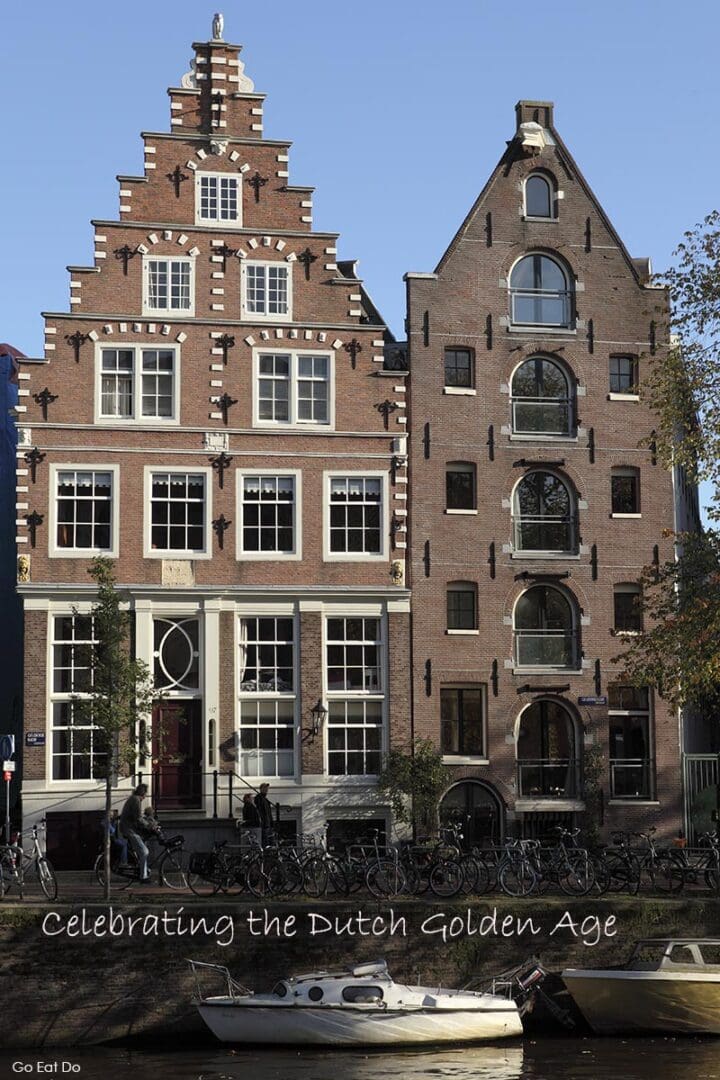Stuart Forster takes a look at the galleries and museums in cities across the Netherlands that hosted exhibitions to celebrate Dutch Golden Age art 350 years on from the death of artist Rembrandt van Rijn.
Disclosure: Some of the links below and banners are affiliate links, meaning, at no additional cost to you, I will earn a commission if you click through and make a purchase.
The Netherlands experienced a period of unparalleled creativity, confidence and prosperity during the 17th century. For the Dutch, it was a golden age. Works by artists such as Rembrandt record the faces and clothing of people alive during that buoyant period.
There are some outstanding art museums in the Netherlands and several of the country’s leading institutions hosted major exhibitions in 2019.
The struggle for Dutch independence
To gain an understanding of how that era came about, it’s worth delving — briefly — into the history of the Netherlands.
The Dutch Republic’s independence from Spain was officially recognised at the Peace of Muenster in 1648. The struggle for self-determination had been long. Using the benefit of hindsight, historians now term the conflict once known as The Dutch Revolt as the Eighty Years’ War.
At the beginning of that bitter conflict, the Spanish gave subjects in what is roughly the same as today’s Belgian territory the option of leaving. That prompted many Flemish people to move to cities such as Amsterdam, Haarlem and Leiden.
Many of those individuals were industrious, wealthy and ambitious; their talent, resources and determination helped act as a catalyst for the economic and creative boom in the decades that followed.
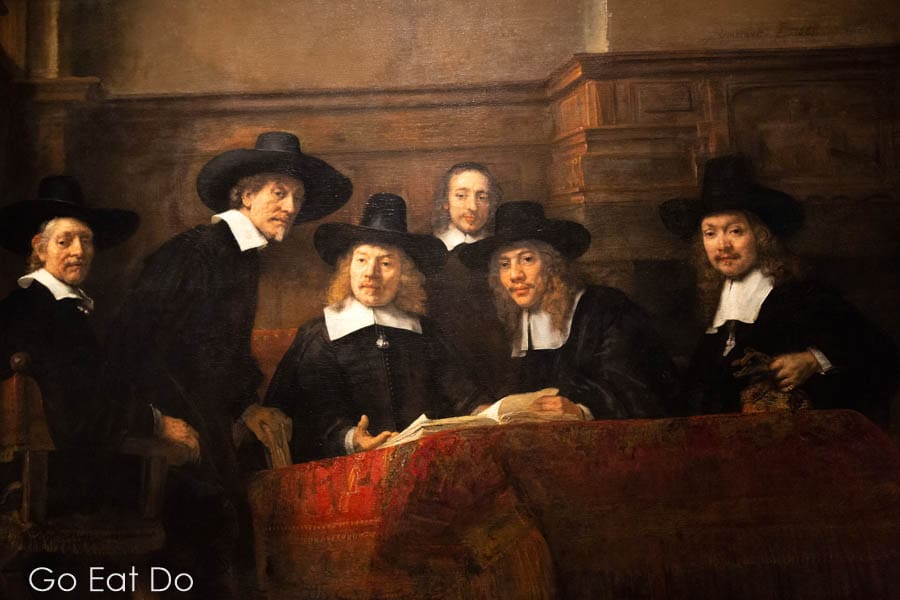
Rembrandt Harmenszoon van Rijn
Rembrandt Harmenszoon van Rijn was born in Leiden during 1606. In his work, he recorded images of some of the most vibrant decades of what is now termed the Dutch Golden Age.
He created his first works in the city of his birth — the location of the oldest university in the Netherlands — then moved to Amsterdam. He lived and worked in the capital of a flourishing maritime empire.
Between 1639 and 1658 his base was in Antoniebreestraat (today known as Jodenbreestraat), where the Rembrandt House Museum now exists. That popular attraction brings to life aspects of the era in which he lived.
His artistic success led to many notable commissions, but his spending outstripped his income. Rembrandt was declared bankrupt. From a historical perspective that personal misfortune has resulted in an insightful legacy into his household and lifetime — the inventory of his belongings which was drawn up to facilitate their sale.
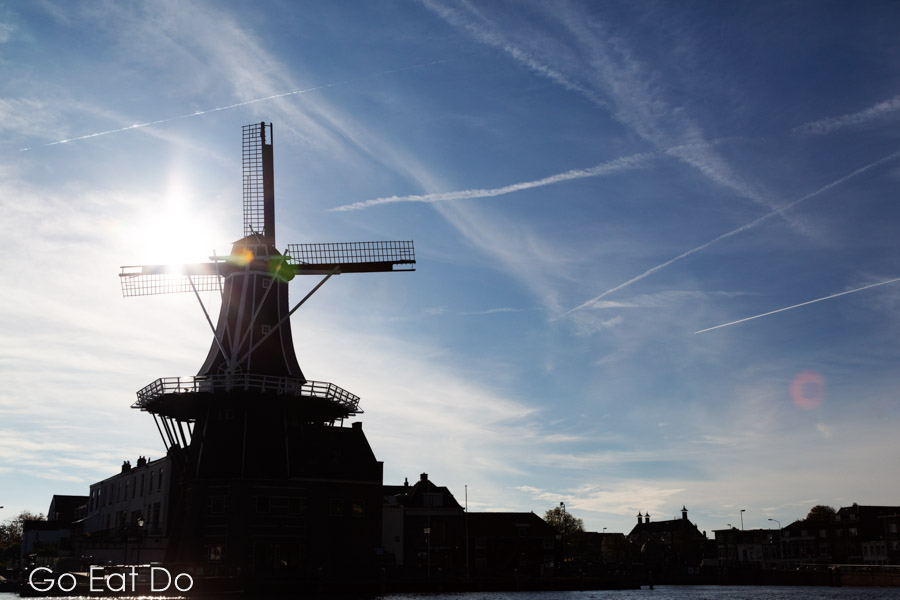
Rembrandt House Museum
Drawing upon an ostensibly contemporary theme — social networking — the Rembrandt House Museum hosted the Rembrandt’s Social Network exhibition from 1 February to 19 May 2019. It explored how the artist made use of contacts to acquire commissions and sell works, and who he turned to for support during times of financial difficulty.
From 7 June to 1 September 2019 works by artists of the calibre of Pablo Picasso and Edgar Degas were displayed as part of the Inspired by Rembrandt exhibition, drawing on artworks from the museum’s collection of paintings by creatives who were influenced by the Dutch Master.
The artist’s innovative techniques of etching and painting were examined in the Laboratory Rembrandt exhibition.

Rembrandt at the Rijksmuseum
The Rijksmuseum conveys the history of the Netherlands and displays artworks from the Dutch Golden Age and beyond. Located in Amsterdam, the grand museum building was designed by Pierre Cuypers, also the architect of the Dutch capital’s central railway station. Bas relief figures adorn the façade of the Rijksmuseum, whose Gallery of Honour was built to give pride of place to Rembrandt’s The Night Watch.
The masterpiece dates from 1642 and, more formally, is known as Militia Company of District II under the Command of Captain Frans Banninck Cocq. At the time, it was an unconventional way of depicting a group and was by no means universally loved.
When the painting was hung in Amsterdam Town Hall in 1715 it was trimmed down. Today that would be regarded as an act of vandalism shedding millions from work’s value. In 1715 it was seen as a practical solution to a problem.
The painting was restored while still on public display as part of Operation Night Watch.
All the Rembrandts, from 15 February to 10 June, saw the Rijksmuseum’s entire collection of Rembrandt drawings, paintings and prints being exhibited together. The museum holds the world’s largest collection of works by Rembrandt.
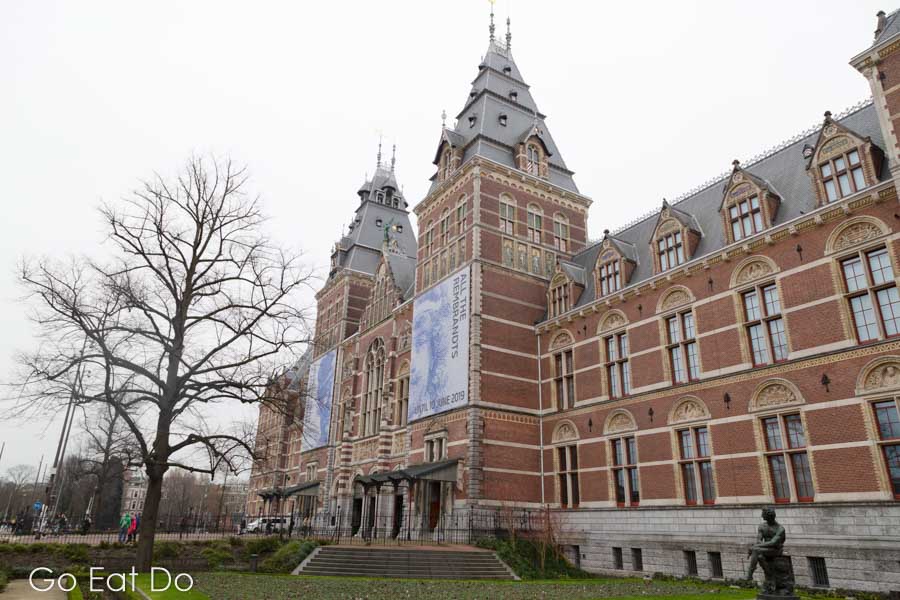
Leiden, Rembrandt’s city of birth
Back in Leiden, Rembrandt’s city of birth, the Museum de Lakenhal reopened to the public in 2019 following major renovations. The new exhibition wing hosted the exhibition Young Rembrandt: 1624 – 1634. Artworks loaned from several international museums were featured in the exhibition.
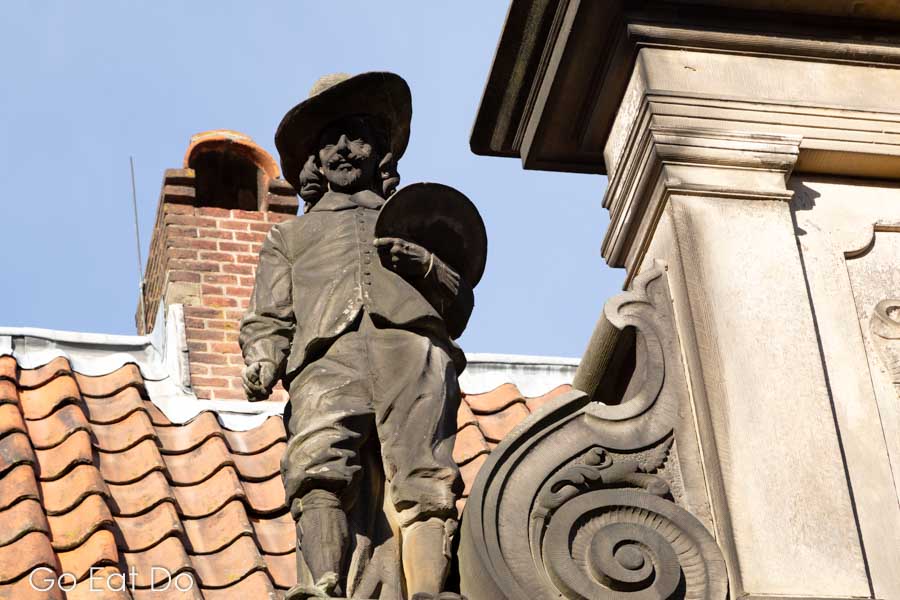
Frans Hals Museum
In common with Rembrandt, Frans Hals inspired many Impressionist and Post-Impressionist artists.
Hals moved to Haarlem from Antwerp as a boy. He lived until 1666. After his death, Hals’ works fell into relative obscurity for two centuries.
They were rediscovered by a French art critic who wrote under the pseudonym W. Bürger. Artists such as Vincent van Gogh, John Singer Sargent and Édouard Manet took inspiration from Hals’ loose brush strokes, rapid way of working, use of raw colours and the gradations in his portraits.
Works by those and other renowned artists featured in the exhibition Frans Hals and the Moderns at the Frans Hals Museum in Haarlem.
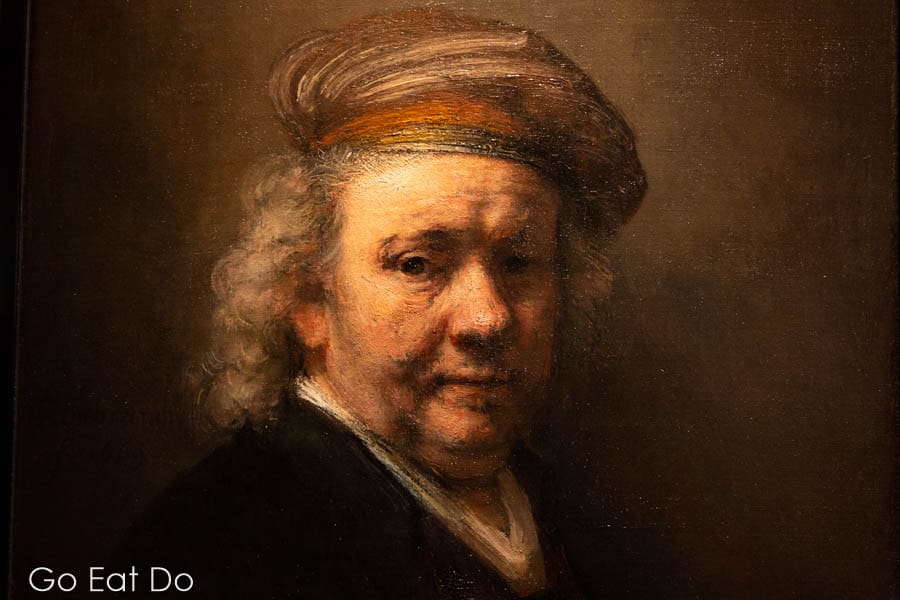
Delft and the Dutch Golden Age
William of Orange was also known as William the Silent, partly because of his inability to speak Dutch well. Yet he was a figurehead during the early years of the Dutch Revolt. His tomb is in Delft’s Nieuwe Kerk. That name means ‘new church’ yet the building’s construction began in 1396.
An exhibition about William of Orange’s life and legacy was held at the Museum Prinsenhof Delft. William held court in the building that now hosts the museum. Two bullet holes, in the wall by the staircase leading from the ground floor, are a reminder of his assassination in the building.
The museum hosted an exhibition about the life and works of artist Pieter de Hooch, a Golden Age master who is often overshadowed by another Delft resident, Johannes Vermeer. The Vermeer Centre, on Voldersgracht, tells the story of the artist’s life and displays facsimiles of his paintings.

The Mauritshuis in The Hague
The original version of Girl with a Pearl Earring is displayed at the Mauritshuis in The Hague. The painting inspired a movie of the same name, starring Colin Firth as Johannes Vermeer.
All 18 of the museum’s paintings attributed to Rembrandt were displayed as part of the exhibition Rembrandt and the Mauritshuis. They include The Anatomy Lesson of Dr Nicolaes Tulp, a painting conveying an aspect of the scientific progress made during the Dutch Golden Age.
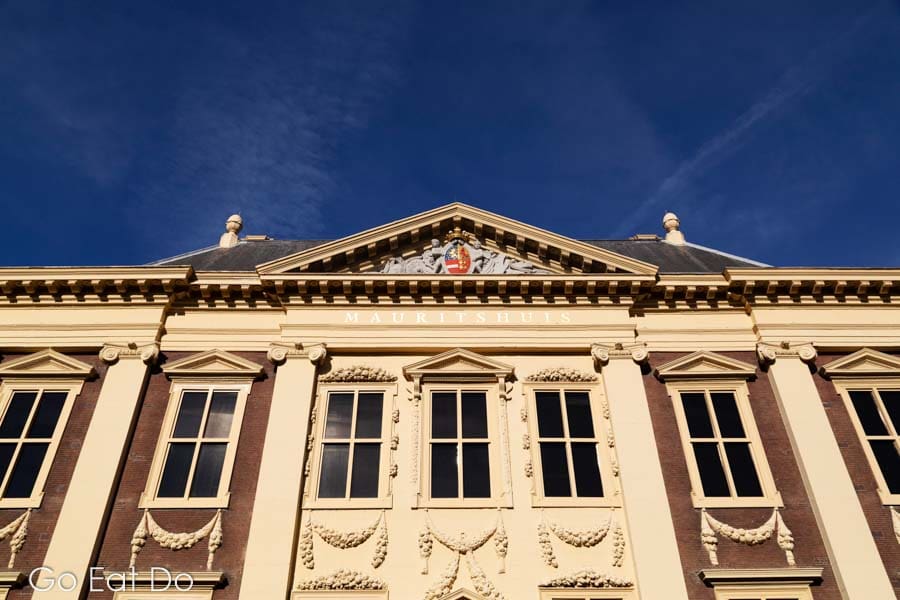
Dordrechts Museum
Meanwhile, in Dordrecht, the Dordrechts Museum hosted Work, Pray and Admire. The exhibition explored the relationship between art and the belief systems that became established during the Dutch Golden Age. Works by Vincent van Gogh and Ferdinand Bol were among those displayed.
2019 was a golden year for anyone who travelled to the Netherlands and had an interest in Dutch art.
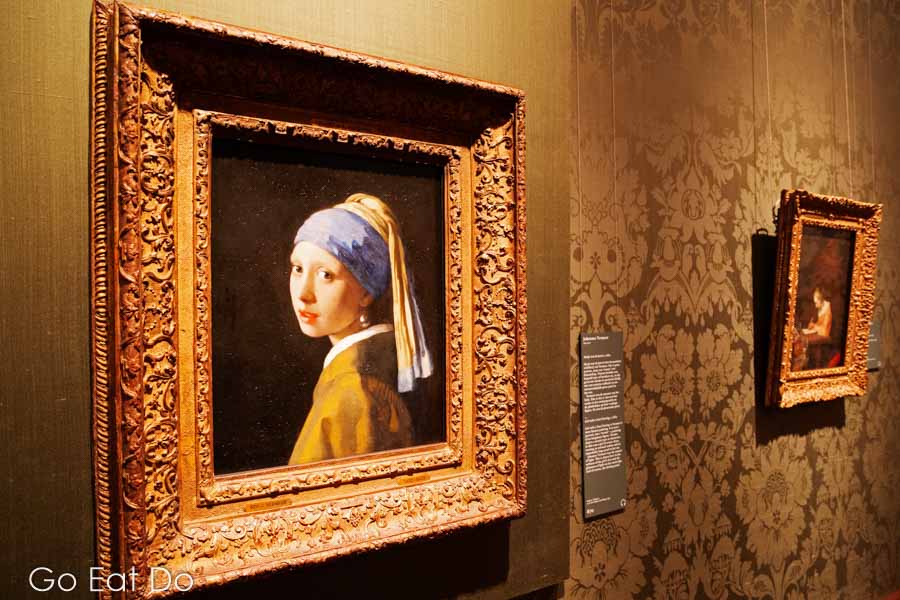
Travel to the Netherlands
While researching this subject, Stuart travelled between Newcastle International Airport and Amsterdam Airport Schiphol with KLM Royal Dutch Airlines. KLM operates services between Schiphol and regional airports across the United Kingdom.
Further information
For further information about the Dutch Golden Age and attractions in the Netherlands, see the Netherlands Tourism and Board of Conventions website.
Thank you for visiting Go Eat Do and reading this post about Dutch Golden Age art. If you’re considering taking a trip, take a look at this A to Z of reasons to visit the Netherlands.
Stuart Forster, the author of this article, was named Journalist of the Year at the 2019 Holland Press Awards.
Photographs illustrating this post are by Why Eye Photography. Call 07947 587136 to commission a shoot.
If you liked this post, please sign up for the free Go Eat Do newsletter.? It’s a hassle-free way of getting links to posts once a month.
‘Like’ the Go Eat Do Facebook page to see more photos and content.
